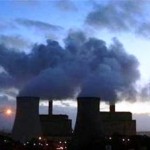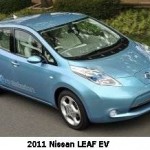The selection of the size of biogas plant to be installed depends upon the number of persons to be served or availability of feedstock. About 25 kg of dung is required per 1m3 of biogas production (Sooch, 2004). The resultant bio fuel, i.e., biogas has high calorific value and produces little pollutants on burning.
Economic Viability
The applicability of any green technology is difficult to quantify unless its economic feasibility is studied. The costs associated with anaerobic digestion technology can be categorized under the following heads:
1) Initial costs of construction and installation of the technology: The structure of a digester is divided into three components – the slurry mixing tank, the digester and the digested slurry collection tank. In the Deenbandhu Model, these structures are all masonry structures. Moreover, the digester is an underground, dome-shaped structure.
Initial cost of installation = Cost of labour + Cost of digging the pit + Cost of construction materials + Transportation cost of construction materials + Cost of pipes and their set-up for gas delivery
2) Costs involved in functioning: This involves costs associated with mixing of feedstock in the slurry tank with water, collecting the digested slurry from outlet tank, drying the digested slurry (by solar-drying or mechanical dryers).
3) Costs incurred in maintaining the digester in a functional state: The plant requires constant supply of feedstock and cattle dung for generation of biogas. Depending upon the size of the plant, the feedstock requirement varies. After construction, costs are involved in running the plant efficiently. The construction material and other installations have a fixed lifetime. The life of Deenbandhu anaerobic digester is around 20 years. (Sooch, 2004)
Annual operational costs = Annual depreciation on civil construction work and other installations + Annual maintenance charges + Cost of dung required per annum
4) Costs associated with technology upgradation: Crop residues should be shredded before being co-digested with animal manure. The efficiency of the plant increases if the shredded residues are made into a partially homogenous slurry using hot water. These processes may involve more financial inputs.
5) Costs of transportation: Transportation costs will involve those associated with transport of the feedstock to the plant, if it is a large-scale community level digester. It will also include the transportation cost to the market for selling the compost produced from the dried slurry.
Profitability
Anaerobic digestion proves to be a beneficial technology in various spheres. Biogas produced is a green replacement of unprocessed fuels (like fuel wood, dung cakes, crop residues). It is a cost effective replacement for dung cakes and LPG (wherever used). A study conducted in rural households in Patiala in the state of Punjab in India, reveals that 1 m3 of biogas equals 0.43 kg of LPG. The yearly income from a 1m3 biogas plant, thus, amounts for Rs. 1,821/- (Sooch, 2004), which is a considerable amount for low income level farmers.
An additional benefit is that the quantity of digested slurry is the same as that of the feedstock fed in a biogas plant. This slurry can be dried and sold as high quality compost. The nitrogen-rich compost indirectly reduces the costs associated with use of fertilizers. It enriches the soil, improves its porosity, buffering capacity and ion exchange capacity, and prevents nutrient depletion, thus, improving the crop quality. This means increased income for the farmer.
Further, being relatively-clean polluting cooking fuel, biogas reduces the health risks associated with conventional chulhas. Thinking regionally, decreased residue burning brings down the seasonal high pollutant levels in air, ensuring a better environmental quality.
Anaerobic digestion, thus, proves to be more efficient in utilization of crop residues. The social benefits associated with biomethanation, along with its capacity to generate income for the rural house-holds, make it a viable alternative for conventional methods.
Constraints
The farmers are largely unaware of the possible ways in which farm and cattle wastes could be efficiently utilised. The government agencies and NGOs are major stakeholders in creating awareness in this respect. Moreover, many farmers find it difficult to bear the construction and operational costs of setting up the digester. This again requires the government to introduce incentives (like soft loans) and subsidies to enhance the approachability of the technology and, thus, increase its market diffusion.
Conclusions
Traditional methods of farm waste management are unscientific and have several negative externalities associated with them. Being the emitter of stock pollutants, like CO, SOx, NOx, PAHs, and aerosols, which accumulate in the atmosphere, traditional practices have a regional impact apart from local damage.

Crop burning decreases the fertility of soil. To meet increasing market demand for more produce, farmers add more chemical fertilizers. With continued excessive usage of chemicals, there is increased salinity, further degrading the soil. Burning of dung cakes/ crop residues for cooking and domestic heating causes health ailments like pulmonary diseases (lung cancer, tuberculosis) due to passive intake by the people residing in the house, especially women and children.
The adoption of anaerobic digestion is required for better utilization of renewable energy resources. However, certain factors limit its wide-spread application in rural societies in India. The most prominent being the lack of awareness among farmers and lackadaisical attitude of the government. The federal and state governments need to be more proactive in providing easy access to these technologies to the poor farmers. The policies and support of the government are decisive in persuading the farmers to adopt such technologies and to make a transition from wasteful traditional approaches to efficient resource utilization.













